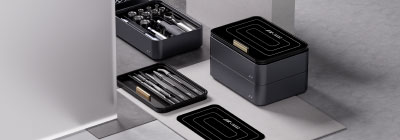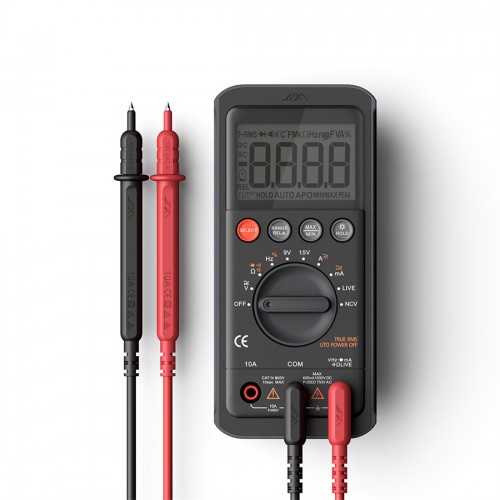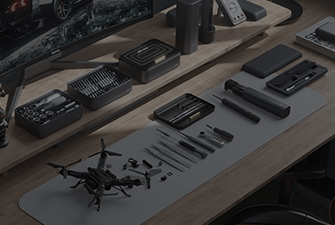
A complete toolbox is a maker's top resource for fundamental tasks like measuring wood to driving screws with precision. This manual provides expertise to choose proper tools and employ them well.
- Kick off by assembling key hand tools including hammers, screwdrivers, adjustable wrenches, pliers, saws, and tapes.
- Learn the role and practical uses of every tool for specialized tasks.
- Perfect your methods with practical work and slowly increase technical difficulty.
Remember that perfecting hand tool use boosts your craft skills. With correct expertise, tools act as extensions of your skills to complete challenging projects precisely.
Boost Project Efficiency with Power Tools
Aiming to improve workflows? Investigate power tools that bring together accuracy and effectiveness. These critical tools can upgrade your craft for both experienced workers and hobbyists. From durable drills to accurate saws, power tools provide a variety of functions for construction tasks.
- Employ cordless impact drivers for fast and effortless fastening and demo activities.
- Perfect use of reciprocating saws to achieve speedy and clean cuts across materials.
- Improve woodworking outcomes via strong planers and jointers providing fine finishes.
Use power tools to streamline timelines and deliver remarkable project results.
Accuracy Simplified
When fine detail matters, selecting proper measuring instruments changes outcomes dramatically. From simple straight edges to high-precision micrometers, essential measuring tools enable accurate realization of concepts. Whether veteran artisan or new hobbyist, mastering essential measuring tools opens many possibilities.
- Peruse the full spectrum of measurement instruments for distinct tasks.
- Familiarize yourself with applications and advantages of each measuring device.
- Develop your skills in accurate measurement and application.
Essential Kits for Every Work
Whether pro or hobbyist, the correct tool kit is vital for any task. In jobs from screwwork to furniture assembly, a proper set ensures efficient, safe and accurate results. To find the ideal match for your needs, consider the type of tasks you'll be performing most frequently.
Do you need a comprehensive set with a wide range of tools, or will a more specialized kit suffice? Once you've determined your requirements, explore different brands and models to compare features, quality, and price. Read feedback from other buyers online to collect practical advice prior to choosing.
With focused research and preparation you'll locate the right set to accomplish projects reliably.
Hand Tool Care for Long-Term Reliability
Taking good care of your hand tools is essential for any craftsman. Neglected tools often develop dull edges, faults and disappointing performance. Frequent servicing keeps tools functioning at peak and prolongs lifespan. After each task, clean tools to remove dirt and preserve performance. House tools in dry conditions to prevent rust formation and corrosion.
- Keep blades sharp by using a whetstone or file on a regular basis.
- Grease or oil moving components with recommended lubricants to prevent wear.
- Inspect handles for cracks or damage and replace them as needed.

Observing these care recommendations extends tool life and results in better, more efficient work.
Core Hand Tools for DIY Workshops
A stocked home workshop offers a great space for hobbyists and DIY practitioners. Although specialized gear benefits projects, foundational hand tools are indispensable. Key items feature a quality hammer, a multi-purpose adjustable wrench and a durable tape measure for exact measurements. Keep screwdrivers of different sizes, versatile pliers and a utility cutter for diverse material work. A sturdy saw is key for precise cuts and a level guarantees aligned, even work.
- Crucial Hand Tools for a Personal Workshop

Power Tool Safety Essentials: A Full Guide
Power tools represent strong machinery providing exceptional power and effective performance. Still, these machines call for careful understanding of safety practices. Not following precautions can yield serious injury outcomes. This compendium explains power tool safety, offering knowledge to ensure secure operation.
Kick off by learning your tools—read manuals thoroughly and absorb the specific safety features. Always put on correct PPE such as safety goggles, ear protection and gloves. Keep tools maintained consistently to ensure they function correctly.
Always remember safety is the foremost concern in workshops. Complying with these precautions ensures you can use power tools safely and with confidence.
Choosing Measuring Devices for Precision
When seeking measurement precision, selecting the right instruments is important. A selection of measuring instruments exists, each tailored to specific purposes. Knowing tool characteristics matters when making informed selections. Assess attributes such as accuracy, resolution and measurement range while selecting instruments.
- When measuring length accurately, a ruler or tape is the standard choice.
- For angles, a protractor is an indispensable tool.
- Analog or digital calipers suit accurate small-dimension measuring.
By carefully selecting the appropriate measuring tools, you can ensure accurate and reliable results.
Selecting the Ultimate Toolkit

Beginning the search for an ideal tool set is both exciting and challenging. With a plethora of options available, it's easy to feel overwhelmed. This comprehensive guide will equip you with the knowledge needed to make the perfect set for your needs.
First and foremost, consider the type of projects you'll be undertaking. Are you a seasoned professional or a beginner? Clearly defining your goals will help narrow down your choices.
- Mixing hand and power tools often yields the best, most efficient outcomes Don't be afraid to combine blend utilize both power and hand tools for a successful productive efficient outcome Use both hand and power tools together when suitable for optimal, efficient results
- Concentrate on securing essential tools
- A reliable hammer, mallet or sledgehammer
- Screwdrivers plus wrench and plier collections form a crucial versatile set
- Measuring essentials: tape or ruler
- Leveling tools like level, plumb bob or transit
Other considerations include construction materials, cost constraints and manufacturer reputation. Keep in mind a durable toolkit is a long-term investment.
Practical DIY: Use Tools Effectively
Beginning your initial DIY project can appear overwhelming. But fear not! With the right tools and a little knowledge, you can turn even the most toughest tasks into manageable achievements. Start by acquainting yourself and learning tool basics. Read instructions thoroughly and test basic operations safely. Always hold safety as the chief priority. Don protective gear such as goggles, gloves and ear protection to prevent injury.
For tool purchases, quality and robustness should guide decisions. Choose dependable brands that consistently provide tools that last.
Seek advice from experienced DIYers or store professionals when unsure. These experts offer valuable recommendations and insights to choose the best tools for your tasks.
- Keep your tools sharp and in good condition.
- Organize and store tools to prevent damage and ensure longevity.
- Don't be afraid to try attempt venture new things
When to Use Power Tools Versus Hand Tools
For workshop projects, the decision between power and hand tools can be perplexing. While powerful power tools maximize speed and output, classic hand tools are indispensable for precise and minor work. Use the following overview to choose the correct tool category for your project.
- Hand tools provide superior control for detailed assembly, carving and intricate repairs. Hand tools commonly offer better control and are more economical options.
- Power tools shine when you need to complete finish accomplish tasks quickly and efficiently, like cutting sawing slicing through wood, drilling boring penetrating holes, or sanding large surfaces. They dramatically reduce time and manual labor required.
In conclusion, the best tool option is based on task specifics, user experience and budgetary constraints. Use both hand and power tools together when suitable for optimal, efficient results.
